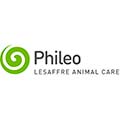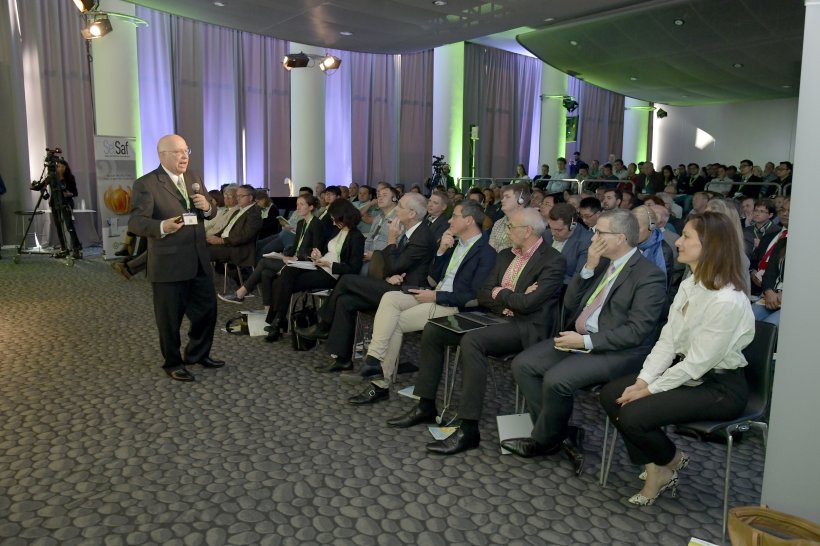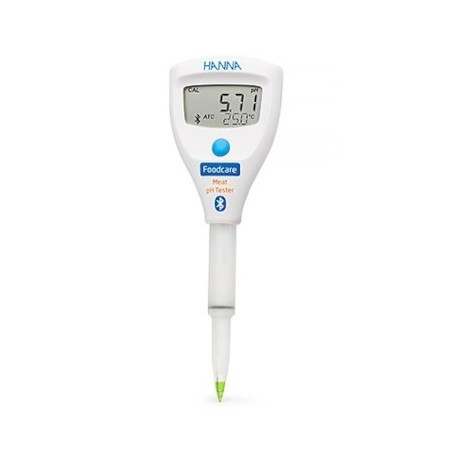 In the heart of Rome, the eternal city, the first afternoon’s plenary session helped to set the scene on the world stage: ‘Our challenge is to produce more with less, and humans are at the heart of our concerns’, clarified Frédérique Clusel, General Manager of Phileo Lesaffre Animal Care, opening the symposium.
In the heart of Rome, the eternal city, the first afternoon’s plenary session helped to set the scene on the world stage: ‘Our challenge is to produce more with less, and humans are at the heart of our concerns’, clarified Frédérique Clusel, General Manager of Phileo Lesaffre Animal Care, opening the symposium.
A global concern

The Rome Symposium yielded the crucial observation that there is increasing global awareness of the importance of reducing antibiotic use, and the twenty or so international speakers who addressed the event over the two days demonstrated this clearly by their presentations on economic, technical and scientific topics. On the economic front, the first afternoon’s plenary session gave the floor to the Brazilian consultant Osler Desouzart, who emphasized the importance of Asia, and China in particular. ‘Asia will account for more than half of the increase in global meat production expected by 2026, with China as the driving force’, he said. According to Desouzart, food animal production will face a global shortage of land and water in the future. ‘75% of poultry production will be concentrated in 26 countries by 2026’, added the Brazilian consultant, who believes it will be possible to produce without antibiotics thanks to advances in science and biotechnology. ‘Food safety is a growing concern for the Chinese authorities, who are currently introducing a system to monitor the use of antibiotics’, reported Chinese consultant Dr. Rongsheng Qiu in a later contribution. According to Dr. Qiu, the China Consumers Association has a strong voice in the scientific debate, and farming professionals are increasingly turning to alternatives to antibiotics, especially enzymes, an expanding market in China. This theme was continued later by American researcher Shawn Bearson, who described the efforts undertaken by the USDA since January 2017 to develop alternatives to antibiotics which promote animals’ immune response and human health. She also stressed the importance of pro- and prebiotics.
A corporate reality
The Rome Symposium also gave a voice to several companies in the livestock industry and distribution sector for which reducing antibiotic use is an everyday reality. ‘Italy is the third largest consumer of antibiotics for farm animals in Europe, and last May Coop Italia started selling its first products from farms wishing to reduce or even eliminate antibiotic use’, commented Chiara Faenza, Sustainability and Innovation Manager at Coop Italia, a leading Italian distribution group representing nearly 19% of the supermarket and hypermarket sector. ‘We have implemented a strategic action plan to manage gut health at weaning in piglets born to prolific sows’, explained Carlo Lasagna of Italian agrifood group Martini, which operates in multiple sectors (swine, poultry, rabbits). These comments were echoed in the swine session by Mathieu Gloaguen, who is responsible for the Cooperl experimental station. ‘Training farmers and veterinarians, and the quest for alternative solutions which strengthen animal immunity, are the drivers of a long-term strategy that should be supported by all players’, clarified Gloaguen. The Cooperl group currently produces 1.7 million swine without antibiotics and has been pursuing an antibiotic reduction strategy for the past two years.
The promise of science
Science was also at the heart of the Rome Symposium, both in the plenary sessions and in the two sessions devoted to swine and poultry. The latter were simultaneously interpreted into six languages (English, Italian, Spanish, Mandarin, Russian and French). ‘We are only just beginning to learn about the gut microbiota, which is deeply and permanently affected by the use of antibiotics’, explained Professor Jan Suchodolski (USA). In a very clear and detailed contribution, Professor Elizabeth Santin of the Federal University of Paraná (Brazil) stressed the importance and difficulty of using earlier indicators of digestive health than macroscopic lesions to monitor digestive health in livestock on a scale suited to the field. This is crucial to better assess gut health in swine and poultry and develop a preventive approach, leading to reduced antibiotic use. The importance of fiber and improving its digestibility was another strong theme of the swine session. ‘Fiber improves gut health by producing volatile fatty acids’, explained Gilles Langeoire, a French consultant in swine nutrition. Langeoire added that ‘a better understanding of the chemical composition of fiber and its effect on the digestive process in the growing animal would allow the use of higher-fiber rations’. Probiotic yeasts can also improve gut health in swine by improving fiber digestion, as Tadele Kiros Gebreyohannes, Swine R&D Manager with Phileo Lesaffre Animal Care (Canada) explained. ‘Daily supplementation of swine with the reference probiotic yeast Actisaf® promotes fermentation in the large intestine, leading to an increase in the energy value of feed ingredients and improved animal performance’, said Dr. Kiros Gebreyohannes, who added that Actisaf® therefore enables less expensive and less energy-dense ingredients to be used in swine diets. This theme was continued by Dr. Jimmie Corley, Swine and Poultry Manager for Phileo Lesaffre Animal Care (USA), who ended the swine session with a presentation on pro-, pre- and paraprobiotic solutions designed to safeguard gut health while improving animal performance. These include the reference live yeast Actisaf® which has several beneficial effects, such as promoting the development of favorable intestinal flora in the piglet, reducing coliform bacteria in the gut and improving the energy value of rations.

Maintaining gut integrity
The session on poultry began by stressing the importance of a good start to the chick’s later performance. ‘Early feed and water intake after hatching improves the chick’s gut development and immune system’, explained Erik Helmink, Director of Marketing at the Dutch HatchTech group. His presentation was complemented by that of Aziz Sacranie, Technical Director of Global Poultry Services (UK), who stressed the importance of the first seven days of a chick’s life for its subsequent growth.
Another key factor in reducing antibiotic use is the introduction of effective vaccination management on farms. Dr. Sarah Tilley (USA), Director of the Poultry Health Service at Fieldale Farms, one of the largest integrated poultry producers in the United States, shared her experience of good vaccination practice intended to improve animals’ resistance to pathogen challenge. However, Dr. Tilley stressed that an effective vaccination plan must be combined with a high level of biosecurity if we are to succeed in using fewer antibiotics in poultry production. Michael Czarick, Associate Professor at the University of Georgia (USA), explained that ‘optimized ventilation management will provide greater comfort for animals and benefit their health’. Air extraction capacity and heating quality are important to improve ventilation conditions in poultry houses, as are the parameters to be controlled, such as CO2 levels, relative humidity and variations in temperature. Moisture extracted from the building does not end up in the bedding, improving animal comfort and reducing ammonia production.
Maintaining gut integrity was also a key theme of the poultry sessions. For Spanish poultry consultant Jose Ignacio Barragan, nutritional strategies help to maintain chicken gut health where antibiotic levels are low or non-existent: check the quantity and quality of soya, check feed energy content, increase crude fiber levels, and use additives such as pre- or probiotics or betaine, which is very effective for intestinal stress. ‘70% of the poultry immune system is concentrated in the gut, hence the importance of maintaining gut integrity to ensure good animal performance’, explained Alain Riggi, Global Poultry Manager for Phileo, who gave a presentation on the value of Phileo’s nutritional solutions (Safmannan®, Nucleosaf® and Selsaf®) in the preventive arsenal against pathogens, with the key element being rational use of antibiotic in poultry. Riggi added that ‘various trials have demonstrated the effect of Safmannan® on the morphology of the intestinal mucosa, improving the ratio of villus height to crypt depth, which is a good indicator of intestinal health’. Riggi also cited the example of Selsaf®, a natural source of organic selenium obtained by culturing a specific strain of Saccharomyces cerevisiae yeast enriched with selenomethionine and selenocysteine. ‘Selsaf® protects poultry against oxidative stress thanks to its seleno-active compounds, helping to maintain poultry health and performance’, he added.
November 2017 - Phileo.






